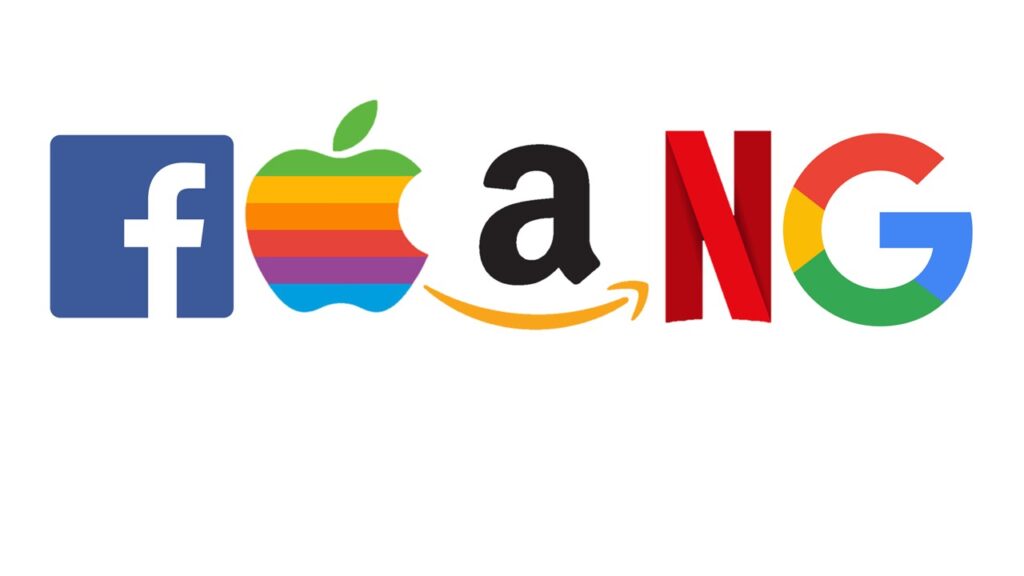The S&P 500 Index fell about 35% from late February 2020 to March 23, 2020, when it reached its recent low point. The Index has since recovered such that it is currently down about 15% from the late February high. The Nasdaq 100 index has fared somewhat better, losing 28% during March and since recovering to be down only about 6%. As of yesterday’s close, the Nasdaq 100 index is actually positive for 2020, despite the roller coaster ride it has been on during these 4+ months. Why the disparity between the performance of these two major indexes? Because the Nasdaq 100 is much more heavily weighted toward the mega-cap FAANG stocks plus Microsoft. While most other sectors are getting killed with shuttered demand, personnel layoffs, and even bankruptcies, the high-tech FAANG stocks are still rolling down the highways at top speed with only light traffic in the way.

FAANG Components
Here is the performance of the individual FAANG components (plus Microsoft), which, together, comprise about $6.5 Trillion of market cap and 47% of the capitalization of the entire index:
- Facebook: 5% off of highs and even YTD.
- Apple: 6% off of highs and up about 1% YTD.
- Amazon: Up almost 25% YTD and just off last week’s all time high.
- Netflix: Up 34% YTD.
- Google (Alphabet): 10% off highs but up slightly YTD.
- Microsoft: 4% off of highs but up 14% YTD.
Based on these results, one probably would not conclude that we are in the middle of a worldwide pandemic wherein perhaps a quarter of the world’s population has been and/or remains on lockdown in their homes. Most of these companies have commercial applications (especially Microsoft) and rely on ad revenue and therefore need businesses and the economy to be open in order to generate revenue and profits. How is it that these companies have seemed to absorb the gut-punch of the shutdown only to move forward and prosper?
Working At Home
The FAANG companies have a number of things in common that have allowed them to prosper and lead through the shutdown:
- All were well-capitalized prior to the shutdown with oodles of cash on their balance sheets. None of them have had to seek new financing.
- All are somewhat oriented toward people either working at home or in their personal or family lives.
- Some, and I am thinking about Netflix and Amazon, which are the best YTD performers percentage-wise, have been able to take market share away from competitors as a direct result of people’s fear of getting sick. People are increasing their percentage of shopping on Amazon because they don’t want to risk sickness at the grocery store and/or traditional retail stores are completely closed, and people are watching Netflix because, well, what else is there to do?
Fallback After Reopening?
Will these high-flying stocks fall back as states and other segments of the economy reopen for business? We will see, but just because some states reopen doesn’t mean citizens will revert to pre-Covid habits. People will remain fearful of getting sick, and that’s the main reason why I think the US economic recovery will take several months or years.
IMO
Earlier this year I wrote that stock indexes have become too concentrated on these few stocks. If I thought so then, I believe it even more now. 47% of the Nasdaq 100 Index’s market cap contained in 7 stocks (including 2 Alphabets) is an unprecedented (in modern times) level of concentration. It is undoubtedly a risk that investors face. That said, all of these companies are on a strong financial footing, and it could be argued that some (especially Microsoft and Apple) are not outrageously expensive on a Price to Earnings basis. I guess my conclusion is that I had better learn to love this paradigm and the level of market cap concentration that we have because it doesn’t look to be abating any time soon.
